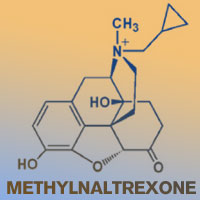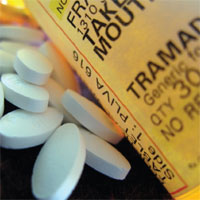Tag: opioids

Opioid Use After Intensive Care
Mean opioid consumption is increased 24 months after ICU admission despite the lack of evidence for long-term opioid treatment. Given the high number of ICU entries and risk of excess mortality for chronic users, preventing... read more

Gabapentinoids and the Risk of Opioid-Related Adverse Events in Surgical Patients
In this real-world cohort study of patients who underwent major surgery, concomitant use of gabapentinoids with opioids was associated with increased risk of opioid overdose and other opioid-related adverse events; however,... read more

Rapid Resilience in the Emergency Department
It is the middle of a busy shift when you get the call that multiple casualties are incoming from a large fire. Your team scrambles to respond as the first victim, a 23 year old with 30% TBSA burns rolls in. He’s screaming... read more

Association Between Benzodiazepine Use With or Without Opioid Use and All-Cause Mortality in the US
This study found a significant increase in all-cause mortality associated with benzodiazepine use with or without opioid use in comparison with SSRI use. Benzodiazepine and opioid co-treatment, in particular, was associated... read more

Substituting Acetaminophen for Fentanyl Feasible in PCI for STEMI
In patients with STEMI given crushed ticagrelor before PCI, using IV acetaminophen instead of IV fentanyl as a painkiller did not increase pain levels or platelet reactivity and prevented delay of ticagrelor's effects, researchers... read more

Perioperative Care of Patients with Fragility Fractures During the COVID-19 Pandemic
High quality prompt care of all people with hip and other fragility fractures is a key component of helping with patient outcomes and bed occupancy during the coronavirus pandemic. Anaesthetists have a key role in ensuring... read more

Methylnaltrexone for Treatment of Opioid-induced Constipation in Critically Ill Patients
No evidence to support the addition of methylnaltrexone to regular laxatives for the treatment of opioid-induced constipation in critically ill patients; however, the confidence interval was wide and a clinically important... read more

A Prospective Observational Study of High-Dose Intrathecal Diamorphine in Laparoscopic Bariatric Surgery
We have demonstrated that neuraxial blockade is a simple, practical, and feasible technique to adopt. Our case series demonstrated a high level of patient acceptability. 50 patients were included. 11 patients (22%) had... read more

Depth of Anesthesia in Children Undergoing Cardiac Surgery Under Extracorporeal Circulation
In children undergoing cardiac surgery in our department, the use of sevoflurane-balanced anesthesia during cardiopulmonary bypass showed no superiority of inhalational agents over total intravenous anesthesia with opioids... read more

Critical Care Opioids Impact in the 21st Century
Critical Care is impacted by opioids in multiple ways. Not only do they form the backbone of managing pain and sedation in the intensive care unit (ICU), the burgeoning opioid epidemic also feeds into opioid-related ICU admissions.... read more

No Reason to Choose Tramadol over Morphine
Tramadol is an opioid, but it does not bind directly to opioid receptors (or it binds so weakly that it might as well not bind at all). Its opioid action is the result of the metabolite O-desmethyltramadol, which means... read more

The Hospitalist Role in Treating Opioid Use Disorder
Opioid use disorder, like many of the other conditions we see, is a chronic relapsing remitting medical disease and a risk factor for premature mortality. When a patient with diabetes is admitted with cellulitis, we might... read more

Evaluation of a Safer Opioid Prescribing Protocol (SOPP) for Patients Being Discharged From a Trauma Service
The aims of this study were to evaluate the effects on opioid medication prescribing, patient opioid safety education, and prescribing of naloxone following implementation of a Safer Opioid Prescribing Protocol (SOPP) as... read more

Opioid-Induced Respiratory Depression Risk Prediction Tool
Ludwig H. Lin, MD, and Ashish K. Khanna, MD, FCCP, FCCM, discuss Dr. Khanna's top-rated abstract, Derivation and Validation of a Novel Opioid-Induced Respiratory Depression Risk Prediction Tool, from the Society of Critical... read more




